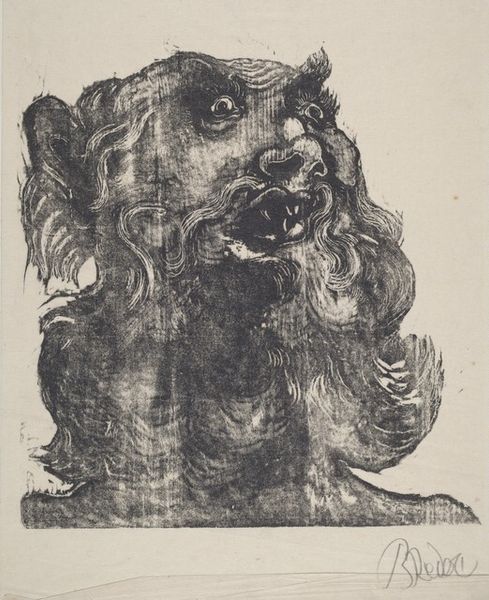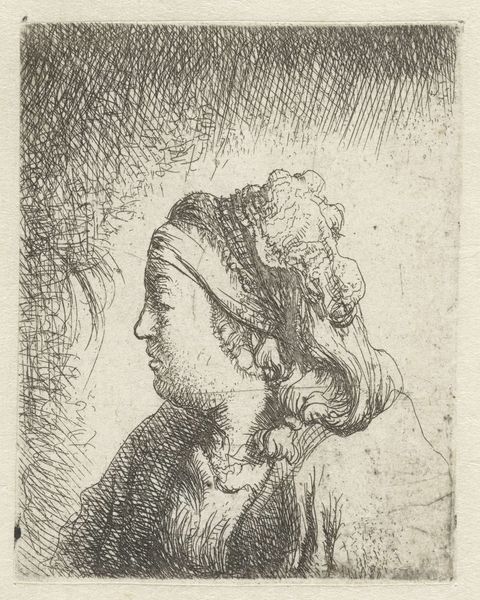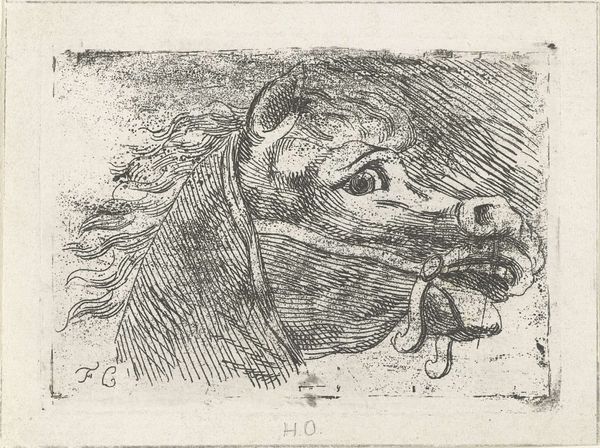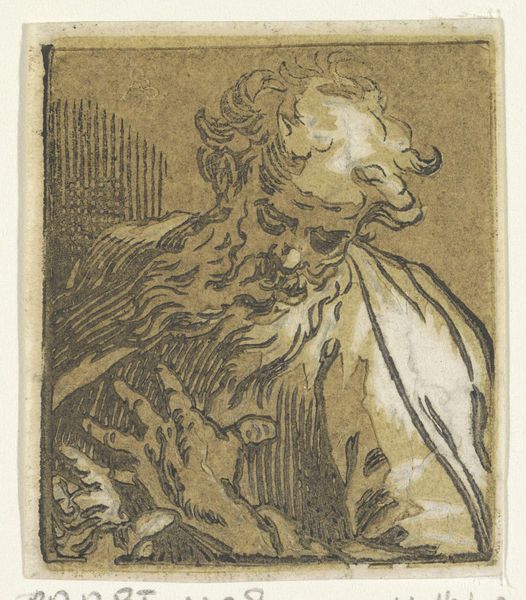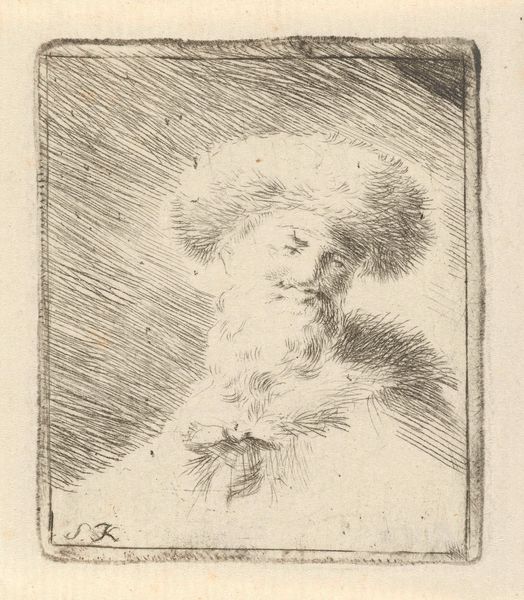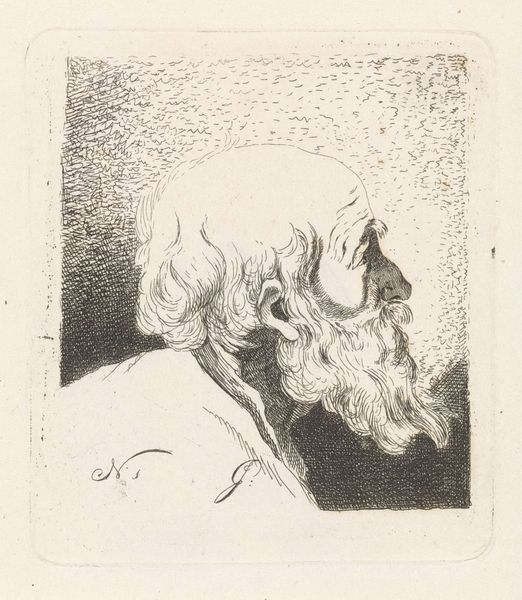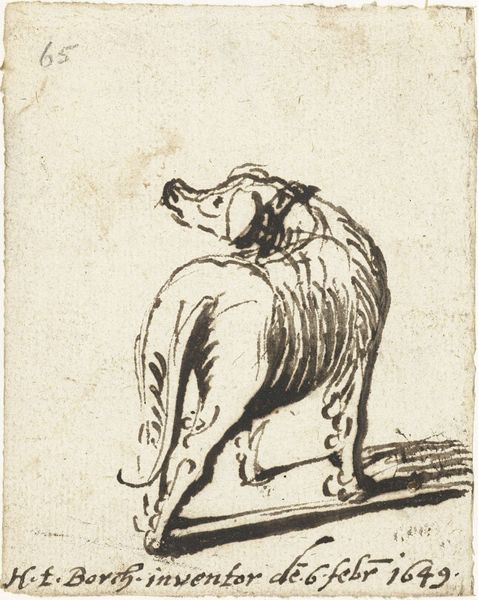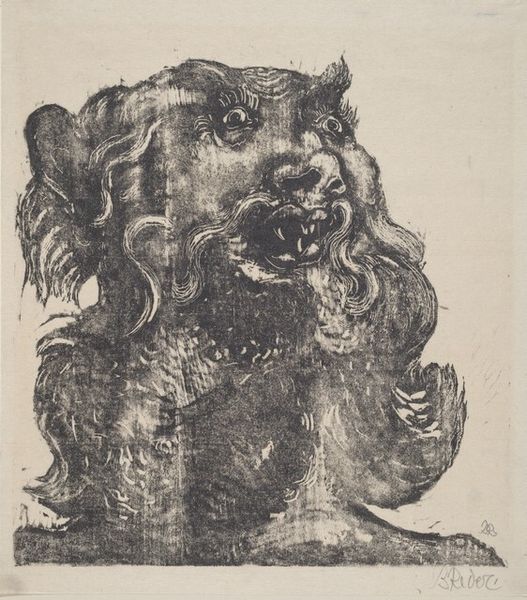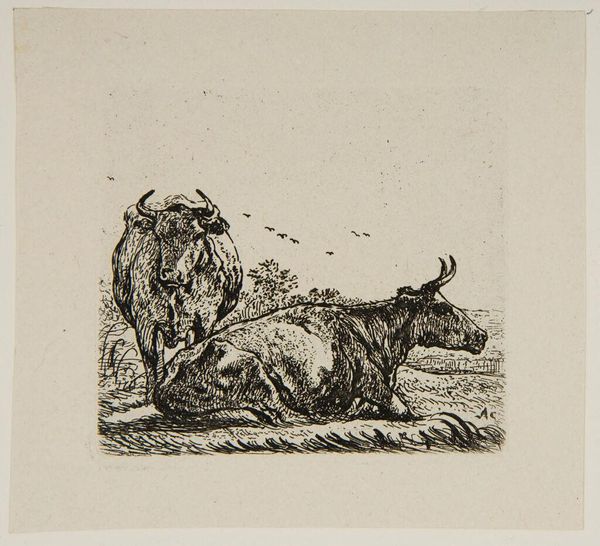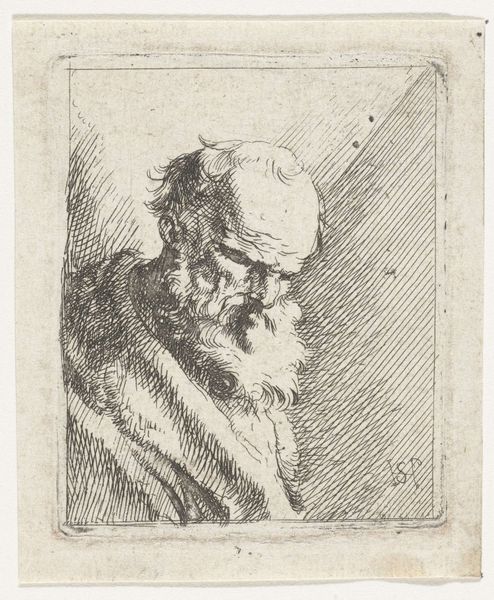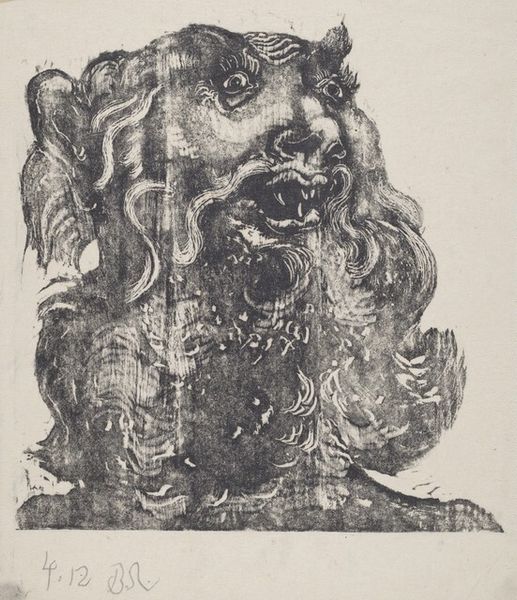
print, engraving
#
portrait
#
baroque
# print
#
dog
#
engraving
#
realism
Dimensions: height 63 mm, width 87 mm
Copyright: Rijks Museum: Open Domain
Curator: This is “Head of a Barking Dog,” an engraving dating from between 1667 and 1714. Though currently attributed to an anonymous artist, it resides in the collection of the Rijksmuseum. Editor: It’s intensely… visceral. The textures are so rich – you can almost feel the dog’s fur and hear the sharpness of his bark. The whole composition pushes towards us with palpable energy. Curator: Indeed. Notice the use of light and shadow, meticulously rendered. The anonymous engraver's deliberate choices sculpt form and depth within the print's inherently limited tonal range. Observe the baroque-inspired realism – every strand of fur, every tooth. The linearity gives detail. Editor: Considering the period, I wonder about its purpose. Was it a study, perhaps a commentary on societal structures, or something simpler, like the era's rising fashion in owning lapdogs? We need to also consider how portraiture began changing for different levels of wealth and status. Curator: One could propose a theory examining canine representation. Given the subject matter, consider its form: a meticulously crafted print intended for circulation. The inherent tension arising from that combination informs its symbolic function. Is this domesticity and control in tension with unrestrained animal vitality, captured within a standardized representational schema? Editor: Or is it simply a compelling study in capturing pure, unfiltered emotion? Think about how accessible engravings like these would have been to a burgeoning middle class, keen to consume art and potentially reflect status back at themselves. It could easily adorn a merchant’s home. Curator: From a formalist perspective, the semiotic reading takes precedent. The barking dog, captured with this level of detail, creates a powerful signifier of immediacy – aggression or loyalty. However, it becomes symbolic when viewed in relation to representational practices, a comment on the aesthetic object's very construction of 'reality'. Editor: But wasn’t it also part of constructing *social* realities, perhaps ideals about domestic life or human mastery over the animal kingdom? You’re analyzing how it reflects social status through visual symbols but that means there must be some form of audience. Curator: The act of close formal reading offers avenues to deconstruct how we arrive at and perceive meaning itself, even without anchoring our readings solely in the fluctuations of historical contingency. Editor: I think understanding the historical moment helps deepen those formal insights though. Ultimately, its both the image *and* what that image does. Curator: Perhaps you’re right, but still, in terms of technical excellence and composition alone, this barking dog transcends its specific moment, doesn't it?
Comments
No comments
Be the first to comment and join the conversation on the ultimate creative platform.
